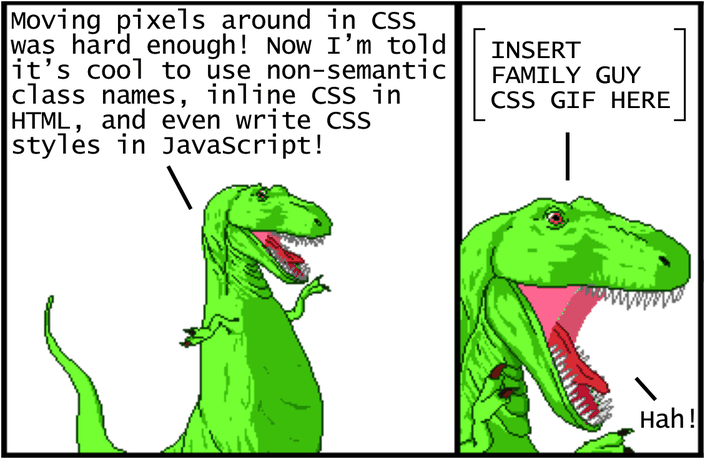
Modern CSS Explained For Dinosaurs
A look into the evolution of CSS
CSS is strangely considered both one of the easiest and one of the hardest languages to learn as a web developer. It’s certainly easy enough to get started with it — you define style properties and values to apply to specific elements, and…that’s pretty much all you need to get going! However, it gets tangled and complicated to organize CSS in a meaningful way for larger projects. Changing any line of CSS to style an element on one page often leads to unintended changes for elements on other pages.
In order to deal with the inherent complexity of CSS, all sorts of different best practices have been established. The problem is that there isn’t any strong consensus on which best practices are in fact the best, and many of them seem to completely contradict each other. If you’re trying to learn CSS for the first time, this can be disorienting to say the least.
The goal of this course is to provide a historical context of how CSS approaches and tooling have evolved to what they are today. By understanding this history, it will be easier to understand each approach and how to use them to your benefit. Let’s get started!
Your Instructor
Peter Jang is the Dean of Instruction at Actualize, where he designs the web development curriculum and teaches live classes at the Actualize Chicago main campus.
Peter has been programming since 1998, earning a masters in mechanical engineering and writing optimization software as a consultant as well as full stack web applications at a Chicago-based startup. He has been a classroom instructor since 2008, earning a masters in education and working as a high school math teacher for 6 years as well as a web development instructor since 2015. His passion is to blend his teaching and programming expertise to create the best technology educational resources available.
